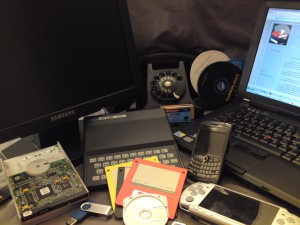Warning This May Kill You
When I was young, I loved the 6 Million Dollar Man, and the Bionic Woman, because the shows were about humans with superhuman power! The premise of the shows, you may remember, was that these individuals had been injured, and through the use of technology, they were “put back together,” with man made parts, which functioned better than the original. What was there not to love?
Today, medical science has made what was once television fiction, a reality through the use of embedded technology. Embedded technology is often not recognized by the average user as a computer; it can best be defined as a system which is designed to perform a specific function, to run continually, for extended periods of time, and hopefully be self-corrective, as opposed to a general purpose computer, like your PC which is intended to perform multiple tasks, be upgraded and maintained, by the user.
One of the more fascinating uses for embedded technology is in medicine. Biomedical embedded systems can include various devices from pacemakers, cardioverter defibrillator, insulin pumps, to cochlear implants.
The appeal of the biomedical field is widespread, tantalizing everyone from Intel, Microsoft, GE, and Siemens. The companies understand the rising health care cost and what medicine will be like in the future. They are working to create life saving and diagnostic systems, based on human and computer interaction.
For example, Cardionet is a wireless device which offers “heartbeat to heartbeat” monitoring. The company offers implantable cardiac defibrillators that provide real time data, on the patient, to the doctor. The data is fed into a server through a wireless home monitoring system. The doctor is then able to access the data, residing on the server, through a web portal; thus able to manage his patient’s healthcare virtually, without necessarily having to see his patient, unless there is a problem. Conversely if the doctor notices an issue, they are able to contact the patient, and advice them of the need to see a doctor immediately.
The growth in this field is sufficiently widespread that ISO, International Organization for Standardization, which works to set standards for business, government, and society has implemented a set of rules for medical implants.
Unquestionably, embedded technology has the possibility of offering us lifesaving and life changing abilities. A bionic eye will be ready for clinical trials by 2011, and in mass production by 2014. Who would not want their sight restored with a bionic eye? The question which we must ask ourselves, as we think of biomedical embedded technology, is how much of our privacy are we willing to lose, in order to benefit from these new devices? As the medical embedded technologies become more pervasive in our life, more of these devices will include 24 hour connectivity, all for our very own safety. As we say yes, I want you to know what is happening to my heart, or to my sugar levels, or my cochlear implant, what are we giving up? If there is a problem, we will say connect and hear what I am actually hearing, or connect to my bionic eye, and see what I am actually seeing, because the colors are off and you will be able to have the company autocorrect your vision. We are heading in this direction and it really is not far into the future.
Where will biomedical embedded technology takes us? The BBC reported that a British scientist had become infected with a computer virus. The scientist had a radio-frequency identification chip (RFID) implanted in his arm, which would allow him to go into certain areas of the University’s laboratory, without having to swipe an ID card.
The scientist and his colleagues created a virus for the chip, the chip was then infected with the virus, and when the scientist entered the building, the lab computers read the code on the chip, thus the virus began to replicate. What the scientist and his colleagues proved is that implanted medical technology is susceptible to computer viruses just like all computer technology.
Can you imagine the consequences of a human computer virus? Knowing what we do about computer viruses. There was a virus that made the computer shut down every five minutes. Can you imagine your pacemaker rebooting every five minutes?
What of the “Killer Chip”? Yes, there is such a thing, invented by a Saudi, Adel Mohammed S Alshareef, who in October of 2007, tried to patent the chip in Germany. It is a basic GPS transceiver that is placed under a person’s skin, allowing the government, for example, to track your movement. The inventor touted his device as a way for governments to be able to keep tabs on foreign visitors, knowing when they arrived, and if they have over stayed their welcome. The inventor, said: “In recent times the number of people sought by security forces has increased. The device would emit encrypted radio waves that would be picked up by satellites and used to track fugitives from justice, terrorists, illegal immigrants, criminals, political opponents, defectors, domestic help, and Saudi Arabians who don’t return home from pilgrimages.” Mr. Alshareef also submitted a request for model B of the device that would automatically kill the implanted individual, with a dose of cyanide, incased in the chip, if they became a security risk, or refused to return home.
Embedded medical devices have shown wonderful life saving success over the treatment of diseases. But companies and governments, which stand to profit, need to step up and build secure medical devices that will provide secure use of this biomedical embedded technology.
http://www.smartplanet.com/people/blog/pure-genius/behind-the-bionic-eye/4022/
http://news.bbc.co.uk/2/hi/technology/10158517.stm











